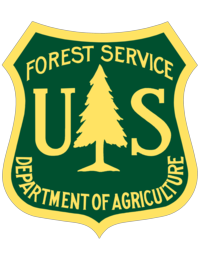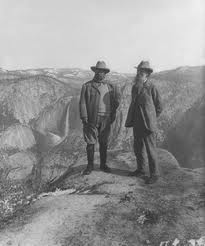
The Wildlife News, I feel sometimes as if the whole wildlife system is falling apart
at the seams.
There always seems to be stories about
people finding carcasses of dead wildlife, how some are taking
advantage of the system, or even what we are told is false. Reading
stuff like this makes me wonder if it really was a good idea for me
to even think about getting the degree that I got. Or even if I
should continue on this career path that I have chosen. It took an
hour long walk and much deep thought for me to realize that while
those on that website probably know what they are talking about, the
majority do not.
Like everything else in the country
wildlife is governed by a set of rules, or rather principles. These
are the guiding factors that influence and dictate what direction
wildlife personnel will take. It is not long, nor is it hard to
memorize, but they are there and if this is your field of choice you
need to know them.
There are seven, and conveniently they
are called the Seven Pillars, or Sisters, of the North American
Wildlife Conservation Model.
- In
the Public Trust – Wildlife
belongs to the people and managed in trust for the people by
government agencies. - Prohibition
on Commerce of Dead Wildlife –
It
will be illegal to sell the meat of any wild animal in North
America. - Allocation
of Wildlife is by Law – Laws
developed by the people and enforced by government agencies will
regulate the proper use of wildlife resources. - Opportunity
for All – Every
citizen has the freedom to hunt and fish. - Non-frivolous
Use –
In North America we can legally kill certain wildlife for legitimate
purposes under strict guidelines for food and fur, in self-defense,
or property protection. Laws are in place to restrict casual
killing, killing for commercial purposes, wasting of game, and
mistreating wildlife. - International
Resources – Because
wildlife and fish freely migrate across boundaries between states,
provinces, and countries they are considered an international
resource. - Managed
by Science – The
best science available will be used as a base for informed decision
making in wildlife management.

pillars, just like the United States Constitution, it is a living
breathing philosophy that can and has changed over time. Remember
from history classes about the taming of the West? That was the
wildlife management of the time, kill everything that you can because
it will always be there. In my field it is called the Age of
Abundance and Exploitation. That was the philosophy of the time,
everything would always be there as you explore the American
Frontier. Use it as you wish.
It was only later, after the American Civil War
that people started to notice a decrease in the populations at the
time. While legislation was put into place around the 1880's, it was
not only ineffective, but also did not cover all wildlife. Deer, yes,
but not elk, bison, or carnivores. It was only with the rise of
sports hunting that more money came into the field and more interest
in saving these animals for future generations. In that respect we
can thank President Theodore Roosevelt who helped to create not only
the US Forest Service, but also helped to establish our National Park System, including Yosemite (right) as a place where anyone can go and see
wildlife in there natural habitat.
Then
you have legislation that was passed soon after that guarantees money
for wildlife purposes. Ever heard of someone talking about
Pittman-Robertson Act? It has an 11% sales tax on guns, ammunition, bows, arrows, and more
that goes to the states for wildlife restoration. What might surprise
people is that it also guarantees a 3:1 match by the federal
government. Yet it does not only help game species, according the the
US Fish and Wildlife website, funds have also been used to help
wildlife habitat that is used by painters, hikers, bird watchers,
wildlife photographers and many other pastimes.
All of this was possible, not only because
hunters wanted more things to shoot, but also because powerful people
saw a need to do something before something uniquely American was
lost. Even then it is important to remember that this is a very young
profession, we will make mistakes. As a whole the ideas behind
wildlife management, restoration, and protection, are only about 125
years old. As a science, it is younger that that –
Pittman-Roberston specifically was only passed in 1937.
Which brings me back to the beginning of the
story. I have found that I have to keep reminding myself that what
people are complaining about, is valid, and is probably known on some
level. But when compared to our own Constitution, it is like
comparing a ten year old to a twenty year old. Not only is it hard to
draw appropriate comparisons, but you are comparing something from
two different time periods.










